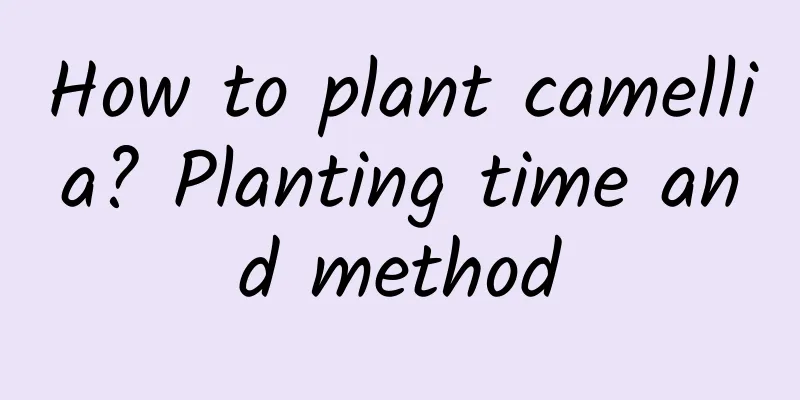Fruit tree planting management guide in November

|
November is the transition period from autumn to winter and is an important node in orchard management. At this time, fruit farmers should seize the favorable opportunity of suitable temperature and sufficient soil moisture to prepare for winter production. Let’s take a look at the fruit tree planting and management guide in November. 1. Timely garden cleaning Remove dead branches, fallen leaves, weeds, diseased, insect-infested and dead fruits and other debris in the garden and dispose of them in a centralized manner (deep burial or burning). At the same time, remove the overwintering insects on branches, old bark cracks, rhizomes, soil and rocks, etc. 2. Land preparation and fertilization According to the type of fruit trees, it is necessary to apply the correct base fertilizer in autumn. Generally, decomposed organic fertilizer and chemical fertilizer can be applied, and the orchard should be deep plowed to improve the soil quality and facilitate the expansion of the root system. 3. Irrigation management For orchards with irrigation conditions, irrigate once with freezing water before the soil freezes. For mountain orchards without irrigation conditions, the ground must be covered to meet the fruit trees' need for water in winter. 4. Pruning and shaping Pruning dead branches, diseased branches, and crossed branches can improve the permeability of the crown, help reduce the occurrence of diseases and pests, and promote the growth of new shoots. 5. Whitewash the tree trunks In order to protect fruit trees from frost damage, sunburn, and bark chewing by wild rabbits, the main trunks and bases of large branches of the fruit trees are painted white. Preparation method of whitewashing agent: 30 parts of water + 10 parts of quicklime + 1.5 parts of lime sulfur solution + 2 parts of salt + 0.25 parts of animal oil. 6. Keep warm Although November is just the beginning of winter, certain anti-cold measures still need to be taken in the cold northern regions. For example, you can add soil at the base of the tree trunk to a height of 30-40 cm, wrap the trunk, and protect it from wind and cold. At the same time, young fruit trees can be wrapped with straw or plastic film to protect the trees. 7. Pest and disease control In November, the main pests and diseases that need to be strengthened in prevention and control include anthracnose, brown rot, canker, red spider mites, psyllids, aphids, scale insects, fruit flies, leaf miners, etc. It is recommended to strengthen field management, do a good job of prevention, and use the medicine correctly according to the instructions. The above is an introduction to the fruit tree planting and management guide in November. However, specific fruit farmers should also formulate the most appropriate management measures based on actual conditions and the growth needs of fruit trees to ensure the healthy growth of fruit trees and the production of high-quality fruits.
|
<<: How long does it take to market cattle?
>>: How many days does it take for Amaranth to germinate after sowing?
Recommend
How to grow edamame in pots on the balcony?
Planting time The best time to plant edamame in b...
8 ways to disinfect soil Simple and effective methods for soil disinfection and sterilization
Nursery plots and flower pots, etc., cultivate th...
Why can’t the succulents I bought grow to good condition (succulents are difficult to grow and have no color)
Why do succulents always fail to survive and are ...
How many pounds of green pepper can be produced per mu?
Green pepper yield per mu If the light and water ...
The reasons and treatment methods for the yellowing of yellow cicada leaves
1. Too much light 1. Reason: If the yellow cicada...
The most auspicious plants in the living room
1. Money Chain Money tree is a succulent plant th...
What should I pay attention to when planting Bauhinia potted plants? Do I need to prune them?
1. Loose soil When caring for Bauhinia potted pla...
How to grow potted water lotus? Cultivation methods and maintenance matters
Water lotus pot cultivation method 1. Seeds: If y...
Pinellia ternata planting technology and per mu income
Pinellia ternata is a plant of the Araceae family...
Can a peony survive if its leaves wilt?
1. Can I still live? Peonies are relatively diffi...
How to Identify Taiwan Podocarpus
1. Appearance Podocarpus is a tree of the genus T...
How to grow hydroponic Green Princess more vigorously
Green Princess is a perennial evergreen foliage p...
Will lotus bamboo bloom?
1. Will it bloom? It is quite common in life, but...
The difference between iris and iris
1. Different leaves Iris leaves appear to be rela...
Is coleus suitable for indoor cultivation?
Can this plant be grown indoors? To answer this q...









